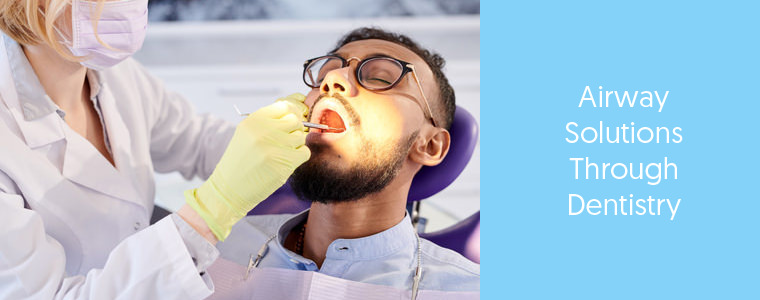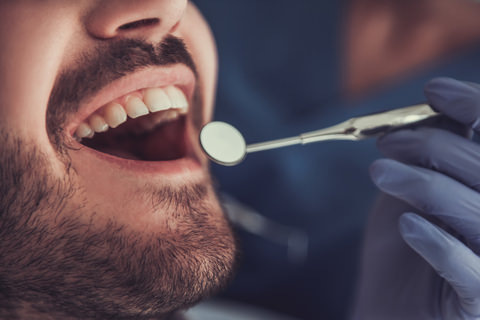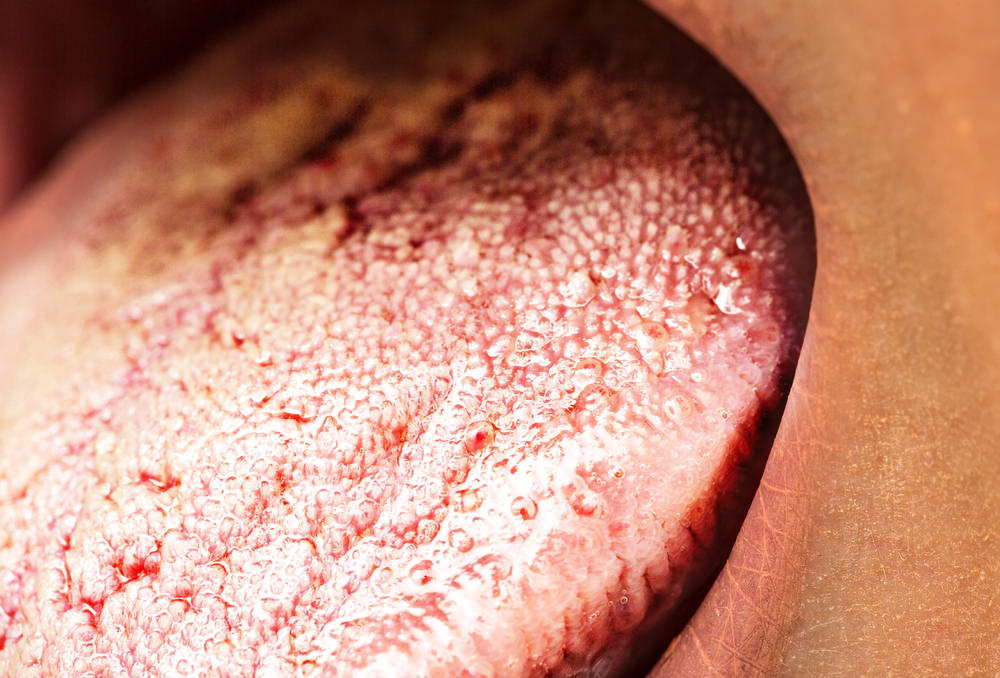Airway Focused Dental Care – What is It?
Feeling fatigued? Suffering from headaches, mood swings, or even finding it difficult to concentrate?
You may be putting the feeling down to lack of sleep or stress, but have you ever wondered if it has more to do with airway-related issues?
Sleep-related breathing disorders can often be difficult for you to notice or diagnose, but once an outcome has been reached, they can easily be rectified.
The importance of breathing often goes unnoticed, yet many are unaware of just how bad it can affect your body chemistry and blood pH levels, the first step to many severe diseases.
Don’t let yours go undiagnosed – find out below whether you should consult your dentist today.
Sleep and Airway Assessment
A sleep and airway assessment is your dentists’ role in screening you for sleep-related breathing disorders.
The assessment will be conducted by your dentist to see whether you have any of the signs and symptoms of dysfunctional breathing and sleep.
In doing so they will review your History (i.e. the signs and symptoms), do a Clinical Evaluation, and perform Screening & Testing.
A typical guideline for each is below.
Your Dental History
A detailed account of your medical history will be gathered to identify signs of a difficult airway.
Questions relating to the following may be asked by your Dentist;
Previous recollections of dental or airway trauma – Things including pharyngeal, oesophageal or tracheal perforation, a chipped or fractured tooth, damaged or missing front teeth, or unexplained oral bleeding can all be signs of prior issues with airway management.
Medical conditions – Disorders such as rheumatoid arthritis or obesity place you at a higher risk of gaining a sleep-related breathing disorder.
Mouth breathing – Mouth breathing is considered dysfunctional breathing, as by breathing through the mouth you do not gain any of the benefits of nasal breathing.
When breathing through the nose, the air is humidified, warmed, sterilised, and your breathing rate is controlled so that an appropriate ratio of carbon dioxide vs. oxygen enters your bloodstream.
Mouth breathing allows dirty air to enter your mouth, straight through to the tonsils, which can result in infection and inflammation.
Snoring – Snoring is a sign of an airway blockage and can also mean your tongue is dropping back. Both may mean you are suffering from Sleep Apnoea.
Sleep Quality – Breathing disorders can interrupt sleep. Another common side-effect of this is frequent urination during the night time.
If you have a poor sleep quality, you may just be suffering from a sleep-related breathing disorder.
Daytime Sleepiness – The most common side-effect of poor sleep quality is fatigue.
Nasal Congestion – If you have frequent nasal congestion or trouble breathing through your nose, a deviated septum, or any other nasal issues, this can lead to dysfunctional mouth breathing.
Chronic Cough – Chronic cough, a sore throat and difficulty with swallowing are all common symptoms of Sleep Apnoea or Gastroesophageal Reflux Disease (GERD).
Deviated Septum – A deviated septum, nasal deformity or damage can lead to trouble breathing through your nose, nasal congestion, sinus infections, or snoring, and thus lead to Sleep Apnoea.
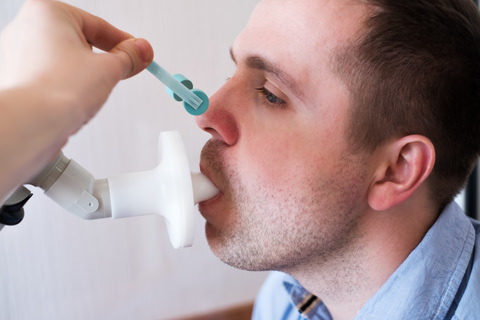
A gentleman having a breathing function test
Clinical Evaluation
Several areas of your body will be assessed, these include:
- Neck circumference,
- Mouth opening
- Jaw protrusion
- Any tongue abnormalities
- Cervical spine mobility
- Any issues with breathing in and out through your nose.
All are good indicators as to whether you are potentially a higher risk candidate for a sleep-related breathing disorder.
Screening and Testing
In recent years, home sleep testing has become a more common evaluation for diagnosing these disorders.
These tests usually measure your heart rate, blood oxygen level, airflow and breathing patterns.
Medical procedures such as a nasopharyngoscopy can also be performed to check the area for abnormal growth, bleeding or other problems.
Either form of testing, along with your History and Clinical Evaluation combined, will result in diagnosis as to whether you are suffering from any sleep-related breathing disorders.
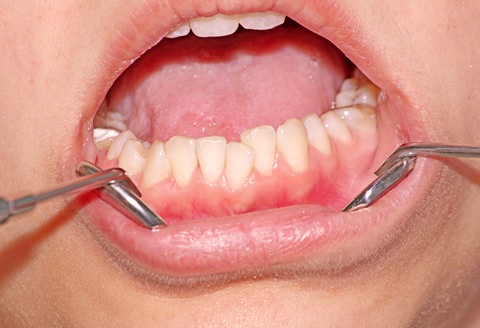
Teeth crowding on the lower jaw of a patient
Can Crooked Teeth Impede Breathing?
Crooked teeth cause a lot of problems – the most common including increased risk of tooth injuries and a decline in overall health, both of which can lead to sleep-related breathing disorders.
Common causes of Sleep Apnoea do include dental conditions such as a large overbite or poorly positioned jaw, which your dentist will evaluate when conducting your Sleep & Airway Assessment.
However, it also works the opposite way – dysfunctional breathing can cause crooked teeth.
Dysfunctional breathing (that is, breathing through your mouth), can have a serious impact on your sleep, thus affecting your general health.
Typically seen in children, the upper and lower jaws may not develop to their full potential, leading to narrow jaws and crooked teeth.
Sleep Apnoea and How a Dentist can Help
Apnoea is a Greek word for “without breath”.
The best way to describe Sleep Apnoea is intermittent breathing, or having your breathing repeatedly interrupted whilst you sleep.
Being one of the most common sleep disorders, this causes you to literally stop and start breathing throughout the night.
This happens when you sleep, your muscles begin to relax, including the ones in your upper airway.
The soft tissue in your airway will collapse in such an extreme manner that it blocks the airway entirely, which triggers your breath to come to a stop temporarily.
Your brain will realise this and wake you up, which allows the airway to reopen, and your breathing to resume – usually with a snort, body jerk, or loud gasp.
Different Types of Sleep Apnoea
There are three different types of Sleep Apnoea, the most common being Obstructive Sleep Apnoea (OSA), as described above.
Another rare form is called Central Sleep Apnoea (CSA), which occurs when your brain doesn’t send proper signals to the muscles that control the rate and depth of breathing.
There is also what is known as Complex Sleep Apnoea Syndrome, a combination of both OSA and CSA.
The severity of the disorder depends on how often your sleep is interrupted. A guide is;
- Normal sleep – Less than 5 interruptions per hour
- Mild Sleep Apnoea – 5 – 10 interruptions per hour
- Moderate Sleep Apnoea – 15 -30 interruptions per hour
- Severe Sleep Apnoea – Over 30 interruptions per hour
Either way, poor sleep quality can lead to other severe health conditions including cardiovascular disease, diabetes, high blood pressure and even premature death.
Therefore, it’s very important for you to be aware of the symptoms of Sleep Apnoea and receive a medical evaluation if you are worried that you may be ticking the boxes.
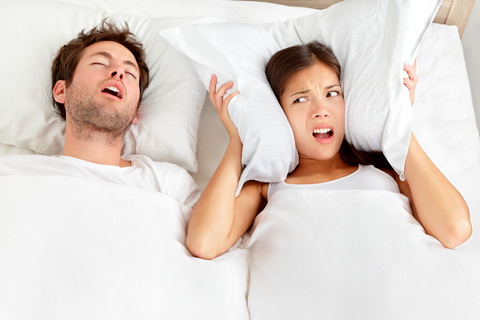
Snoring can be a symptom of Sleep Apnoea
In many cases, you may not be aware of having your breathing stopped and started during your sleep – you may not remember waking up.
However, trust me when I say, your partner will notice if you are keeping them up consistently!
Don’t have a partner or want to know more?
Here are a list of symptoms and causes relating to sleep apnoea:
16 Symptoms of Sleep Apnoea
- Loud, constant snoring
- Insomnia or sleep deprivation
- Nightmares
- Choking or gasping for air during sleep
- Morning headaches
- Frequent urination at night
- Sexual dysfunction
- Extreme cases of daytime fatigue, including falling asleep while reading, watching television or even driving
- Depression or irritability
- Difficulty thinking and understanding
- Poor concentration
- Night sweats
- Dry mouth or dry throat
- Weight gain
- Lack of energy
- Forgetfulness
11 Common Causes of Sleep Apnoea
- Poorly positioned jaws or tongue
- Dental conditions including a large overbite
- Your diet
- Allergies that may cause your throat to swell
- Obstructive/inflamed tonsils
- Obesity
- Hypothyroidism
- Deviated septum
- Smoking
- Excessive alcohol use
- Some medications, such as sleeping tablets and sedatives
If you believe you may be a candidate for Sleep Apnoea, the sleep clinic or doctor is not the only place you can go – your dentist can also help you eliminate the disorder.
Once receiving a diagnosis, your dentist will help you learn more about your treatment options.
Being a less costly and more effective form of treatment than what the doctor or sleep clinic may offer you, it’s definitely worthwhile giving your dentist a visit.
Other Sleeping Disorders a Dentist can Help with
There are several connections between your teeth and sleep that your dentist may be able to assist you with.
- Bruxism – That is, jaw clenching or grinding your teeth whilst asleep. This can cause pain, damage the teeth, and predict or even prevent the risk of Sleep Apnoea.
- Snoring – This loud sound is caused by the vibration of unsupported tissue in your airway.
- Upper Airway Resistance Syndrome – This condition is related to increased blockage of your airway, or increased airway resistance.
- Hypopnea – This is a narrowing of your airway, which results in a reduction in airflow and a decrease in respiratory effort.
What Dental Tools Help with Airway Intervention
A lot of the obstruction of the airway in sleep-related breathing disorders occurs at the level of your tongue base.
As your tongue anchors to the base of your jaw (otherwise known as the “mandible”), moving your lower jaw forward will hold the tongue base away from the back of your airway.
This creates more space to reduce the risk of the airway narrowing, therefore reducing the risk of snoring and Sleep Apnoea.
The most common devices that are used to hold the mandible forward are mandibular advancement splints.
These “mouthguard-like” devices are made, fitted, and adjusted by your dentist, and designed to be worn at night time.
They pull your lower jaw forward so that the muscles which normally collapse during sleep tighten instead and can’t fall down.
After some time, the oral appliances have the ability to make your airway stronger, so that the disorder is reduced, or even erased from your life altogether.
There is also a tongue-retaining device, which holds your tongue in a forward position. Also designed to be worn whilst sleeping, this device too keeps your airway open.
Another option your dentist may offer you is a “Continuous positive airway pressure (CPAP) via nasal mask”.
This is a machine, designed to blow air through a mask into your mouth and nose whilst you are asleep.
The pressure of the air keeps your mouth and throat open, once again preventing your airway from collapsing.
Despite being the most effective treatment for Sleep Apnoea, you may find it uncomfortable and difficult to stand the pressure of the mask.
Regular appointments with your dentist – at least once per year – are required once these devices are fitted so they can inspect your teeth and bite, to ensure your treatment is working, and your disorder is improving.
Please note that any device you may choose may be uncomfortable for a few days, but this feeling will fade.
Improve Breathing with these Simple Steps
Firstly, it’s important to note what breathing should feel like.
If you’re breathing properly, your breath will be soft or silent, smooth, steady and completely under your control.
You should feel relaxed, and not as though you must put too much pressure on yourself to get enough air.
In other words, it should feel easy to breathe.
Having trouble breathing? Here’s…
11 Simple Steps to Improve Your Breathing
#1 Adjust the way you are sleeping
The way you are sleeping may be affecting the way you are breathing.
Try sleeping on your side with your head elevated and with a pillow between your legs.
This position helps keep your spine in alignment, helping keep your airway open, which may help prevent snoring.
#2 Make positive lifestyle changes – Keep your lungs healthy by keeping a healthy weight and eating foods full of nutrients.
This includes those full of antioxidants such as berries, omega-3 and omega-6 acids such as fish, protein such as chicken, and vitamins such as spinach, eggs and red meat.
#3 Quit smoking – If you are a smoker, quit smoking. If not, try to stay away from second-hand smoke.
#4 Keep yourself immunised – For example, be sure to get yourself the flu vaccination, as this can prevent lung infections.
#5 Try meditation – Practicing meditation on a regular basis gives you the time to focus on your breathing. It also helps reduce stress.
#6 Keep a clean home – Improve your indoor air quality by using tools such as indoor air filters or house plants and reduce any artificial fragrances, dust and mould.
#7 Amend your posture – Ensuring you keep good posture keeps your chest and the thoracic region of your spine fully expanded.
This means your rib cage and diaphragm will also be able to fully expand, and you’ll be able to breathe easier.
#8 Sing – Believe it or not but singing can improve your lung function and breathing.
Singing can help teach you to breathe slower and deeper and strengthen your breathing muscles.
#9 Stretch – Any stretches that release tension in your back, shoulders and chest, or help to improve flexibility or posture, can help you to be able to fully expand your ribcage when you breathe.
#10 Massages – As well as stretches, going for a massage to loosen up any areas of tightness can assist.
#11 Exercise – It’s a good idea to become involved in activities that keep you active, such as swimming or rowing.
Doing these exercises frequently can not only improve your lung function but also help you become more knowledgeable and gather more control of your breath.
There are also many breathing exercises you can try but consult your doctor before undertaking any of these.
Conclusion
Although they may be difficult to notice and diagnose, it is important to control sleep-related breathing disorders such as Sleep Apnoea before they lead to more severe health issues.
If you begin to recognise any symptoms such as constant snoring, sleep deprivation, gasping for air during sleep, morning headaches, frequent urination at night, or daytime fatigue, it may be worth getting yourself to the dentist for a Sleep and Airway Assessment.
In the meantime, if you focus on your breathing by keeping a clean and healthy diet, lifestyle at home, this may help ensure you are not at a higher risk of becoming a candidate for any of those pesky disorders to do with your airway.
How could you improve your breathing?
By Anthony Cade
Created at May 02, 2019, Updated at January 25, 2025


